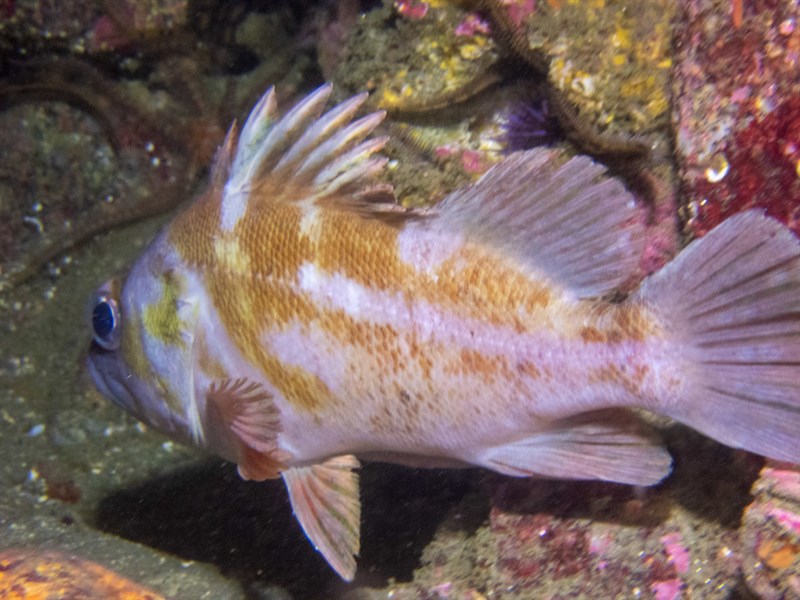The Copper Rockfish, scientifically known as Sebastes caurinus, is a prominent species of rockfish found along the North American Pacific coast. This fish is characterized by its distinct copper-colored body and its ability to thrive in a variety of marine environments.
Description & Characteristics
The Copper Rockfish is a relatively large species of rockfish, reaching a maximum size of 58.0 cm. Its body is typically a vibrant copper-red, though color variations can occur depending on the individual and its environment. This species is easily identifiable by its prominent spines along the dorsal fin, which are often a darker shade of red. The Copper Rockfish has a robust, elongated body with a slightly compressed profile, making it well-suited for navigating the rocky habitats it inhabits.
Habitat and Occurrence
The Copper Rockfish is a demersal species, meaning it primarily lives and forages on or near the bottom of the ocean floor. They are commonly found in depths ranging from 10.0 to 183.0 meters, inhabiting a variety of marine zones, including the intertidal zone, the subtidal zone, and the bathyal zone. This wide depth range reflects the species’ adaptability and ability to thrive in a variety of environments.
Taxonomy
The species Sebastes caurinus belongs to the Class: Teleostei, Order: Perciformes, and Family: Sebastidae. This classification places the Copper Rockfish within a group of fish known for their bony skeletons, prominent spines, and often colorful appearances. The Sebastes genus itself encompasses a large number of rockfish species, making the Copper Rockfish just one member of a diverse and ecologically significant group.
Feeding
The Copper Rockfish is a carnivore, feeding primarily on a variety of invertebrates and smaller fish. Its diet includes clams, crabs, edible crabs, small fish, shrimps, and snails. This diverse feeding strategy allows the Copper Rockfish to exploit a wide range of food resources, contributing to its success in a variety of marine habitats. Their predatory nature plays a crucial role in regulating the populations of their prey species within their ecosystem.

Image References